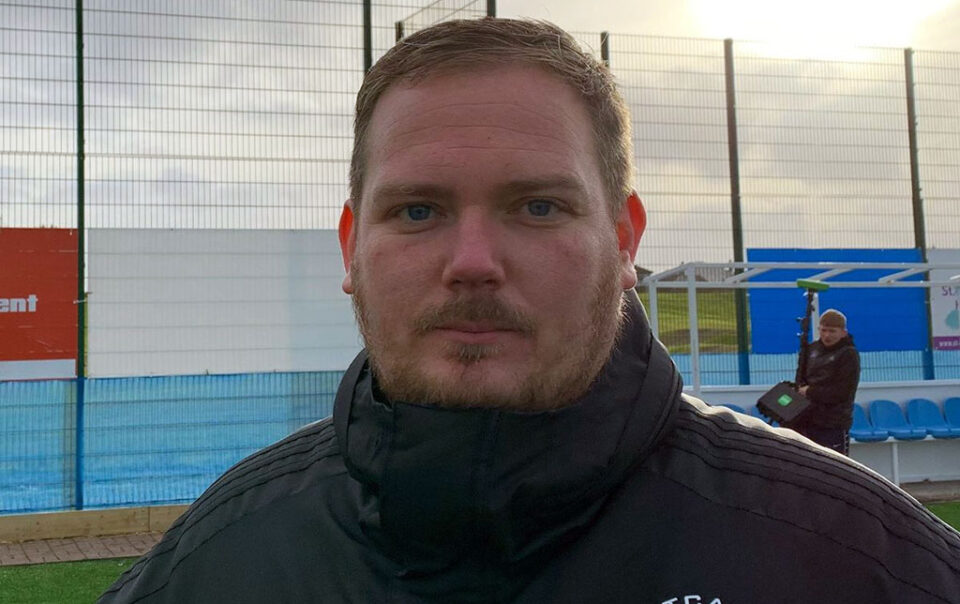Focusing on our Monthly Educational Campaign on Player Centered Session Design, we present eight takeaways from the fantastic Webinar in which Chris P., Rush Soccer’s Developmental Director, discussed with Scott Mills, former Club Coach Officer for the Scottish F.A., ways to plan, analyze and change the way we prepare our sessions.
Designing a Player Centered Training Session can be a challenge. With almost two decades of experience, Scott Mills is an expert on the subject, and shared with us some key insights. His Resume includes a key position on Coaching Education as Club Coach Officer at the Scottish Football Association (Working as a mentor to local coaches in order to up skill and help progress their development. Involves analysis, 1to1 communication, designing and evaluating a curriculum) and Coach at Partick Thistle U17s Youth Academy.
Below, 8 Tips From Scott Mills To Design, Execute And Reflect On Training Sessions:
1) Using another Coach to guide the opposing team during training: When we are executing a session that requires two -or more- sets of players at the same time (for example, defending team versus attacking team), having a second coach will help us concentrate on what we want our players to do. “He/She will be coaching the ‘other’ players -Scott explained- and he/she will be challenging me and my players, so we won’t coach the same thing“.
2) Benefit from the warm up portion of the session for personal interaction: Coaching isn’t just giving players tactical and technical tips. Having a two-way communication with the team is key, even more when we coach young, developing players – they can be looking for someone who listens to them. So, we must use some time (warm up is just one option) to ask them how they are, what’s going on with their lives, etc.
3) When designing a session, ask yourself: Would I enjoy this? It is important to focus not only on teaching, but also on maintaining the players ‘engaged’ with the topic. “I think that the players respond to that and after something they enjoyed it also teaches them. And that’s the best part“, Scott stated. We’ve all been kids and -I guess- we all love playing soccer, so imagine for a second that you will be part of the activity and self-reflect on how that session would be enjoyable.
4) Get feedback on the session, from fellow coaches and players, consider how you may alter the design to make it better. Video or record the session so you can reflect: Soccer is in constant evolution and so is coaching. It is almost an obligation to keep an open mind for changes and accept advice from other coaches or even find room for improvement after a simple question to your players: ‘What was your favorite part of the session?’. During the next session, implement the change: this will show you have heard the players voice and implemented their thoughts.
5) Players should experience all aspects of the game by playing multiple positions until 11v11: As we can find on our Rush Way Guides by Age Group, we must provide our players the possibility to evolve not only from a small sided field to a full sided, but also by making them play on as many positions as we can. Scott Mills seconded this: “I think it is really important that players get the example of both sides of the game: attacking and defending, right, left and central“. To ensure that players fully develop and are exposed to different perspectives, we must try and teach them to exploit time and space. This will inevitably increase their capacity, vision and, why not, may help them realize which is their favorite position.
6) Even if you’ve spent a lot of time designing a session, alter it if it isn’t working with the players: This comes as a continuation of the previous point: keep an open mind to make changes or replace some aspects. Don’t force it. You can create a great session, but it may not be what the team needs at that point or what they need to improve the most.
7) Ask players to provide their own objectives/goals for a game, or coach providing objectives: “Each of our players have a pentavalent plan and define objectives for short, medium and long term for them. You (coaches) then help them, for example, if one player said ‘I really want to improve my speed and agility’, we will see the design of sessions that they think can make. We also ask them to set an objective for the match, so we’ll ask them ‘how are you going to achieve that?‘”, Mills argumented. That way, the player will set his/her own goals, as well as receive precise coaching while feeling part of the session design.
8) Players sharing objectives can help each other achieve their goals: Soccer isn’t an individual game. So, why forbidding the players the chance to share an objective? “If you’ve got your goalkeeper who’s been playing out of the back -Chris P. explained- and you’ve got your fullback and wants to to receive the ball across the body and go, they can work in tandem, and that’s huge“.









